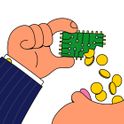In December, cell biologist Randy Schekman of the University of California at Berkeley, two months after becoming a Nobel laureate for his work on how cells move parcels of molecules around, announced that he would no longer be publishing papers in the “luxury journals” Nature, Science and Cell. The “tyranny” exercised by these top journals, he argued in the Guardian, is distorting science, rewarding research that is flashy and trendy rather than necessarily important and forcing scientists to devote undue effort into publishing there.
The response from the journal editors was muted. Nature’s editor Philip Campbell insisted that the decisions of his staff weren’t driven by the likely media coverage a paper will generate, which they couldn’t predict anyway. Monica Bradford, executive editor of Science, issued a statement that, while doubtless true, came across with consummate corporate blandness: “Our editorial staff is dedicated to ensuring a thorough and professional peer review upon which they determine which papers to select for inclusion in our journal.”
One can understand these editors not wishing to be drawn into an antagonistic spat with their clients, which constrains them to the faux politeness of the abused hotelier in This Is Spinal Tap: “I’m just how God made me, sir.” But it means that Schekman has rather got away with it. As an ex-editor of Nature who feels some fondness but no duty towards his alma mater, I can offer something more robust.
Schekman’s complaint about the kudos attached to publishing in these journals is valid and important. But like many scientists, he seems on the one hand pretty clueless about how the journals operate and on the other hand in denial about where that inflated kudos comes from.
One of his gripes is that the journals manipulate the market by restricting the number of papers they publish. At Nature, the size of the printed journal was always dictated solely by economics, with a view to which the managing editor was constantly worrying about the page budget. While the journal stays on paper, that isn’t likely to change. But the real point is that, during my time at Nature, not once was I or my colleagues compelled to reject a good paper because there was no room for it. Competition was stiffer in the life sciences (I handled physical sciences), but frankly this had more to do with that community’s sometimes inflated sense of self-importance than with its over-production of good papers.
For online journals, these length limits of course need no longer apply. When Nature and Science no longer exist on paper—and that day may well not be too far off—there could be some sort of shift in what they publish, though probably not as much as Schekman might imagine or wish for. But he doesn’t add much to the credibility of his argument by using it to promote the online journal he edits himself (eLife), which is “publishing world-class science every week.” His suggestion that such ventures are improved by being edited by “working scientists” rather than professional editors is, meanwhile, absurd. Most academic journals are already edited that way, and while their editors do a great and selfless job and publish lots of excellent work, still it shows. Papers that receive no input from trained editors are pretty much as you’d expect: often badly written, poorly structured, sometimes incomprehensible and error-ridden. I know, because I have to read them. Besides, fears that one’s academic peers have axes to grind was one reason why some authors felt in safer hands at Nature.
Schekman implies that the “luxury journals” favour papers in trendy areas over ones that are the best. But the bubbles are blown by scientists themselves, not by the journals. When a topic was deemed “hot”, Nature was inundated with papers in that area. Even if a disproportionate number were rejected, still a disproportionate number would have to be published, unless the editors were to impose some arbitrary and unfair moratorium.
Schekman claims that publications in Nature, Science and Cell are given undue weight in assessments of funding, academic tenure, and status. He is right, and it used to drive me crazy. It was always abundantly clear that the short format of a Nature paper was suited to some kinds of results and not to others (such as those that provided large, valuable data sets). This obviously meant that Nature could publish only a particular subset of all the good work that scientists did. At least, it seemed obvious to me, but grant agencies and selection committees seemed happy to support the idiotic businesss of counting up a group’s or individual’s “high-profile” publications as some kind of quality gauge. It became worse when computerised databases of citation statistics made it possible to create bibliometric indices such as “citation factors.” Campbell points out that he and his colleagues “have expressed concerns about over-reliance on impact factors many times over the years, both in the pages of Nature and elsewhere.” It’s the scientists and their institutions that dote on them, not the journals (although the editors could undoubtedly do more to quell the baser impulses of their marketing departments).
And therein lies the root of the problem with Schekman’s outburst. He has identified a real problem, and hopefully he will stimulate an overdue debate about it. But by presenting it as a poor, innocent scientific community being abused by tyrannical editors—comparable to the way citizens are at the mercy of a corrupt and rapacious financial system—he runs the risk of misdirecting the discussion from the outset. The distorted incentives, misplaced priorities, corner-cutting and jockeying for position are problems self-inflicted by the scientific community. If Nature, Science and Cell are becoming monsters, it’s the scientists who have created them. They have no moral high ground from which to preach.
Scientists, not editors, are distorting science publishing
January 10, 2014












